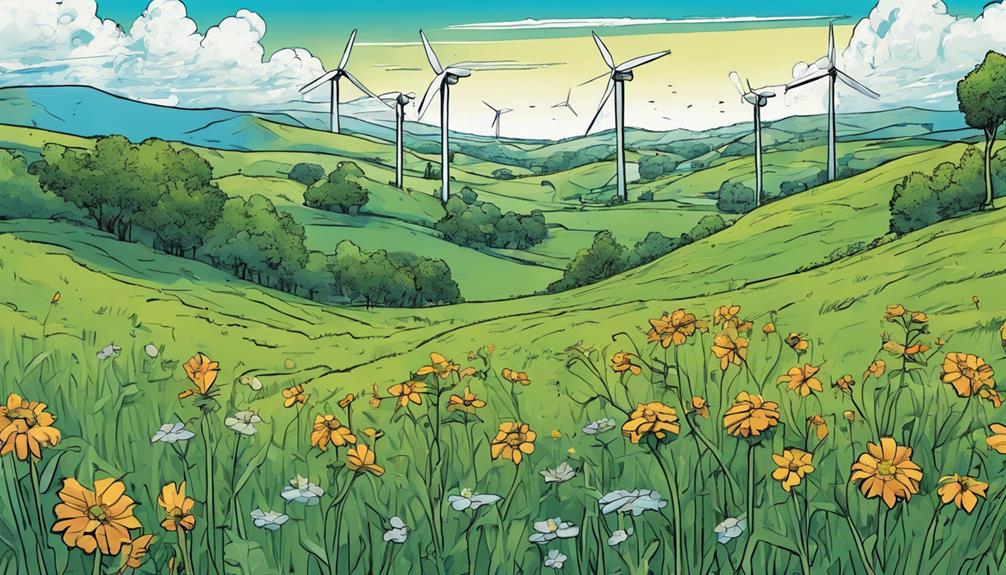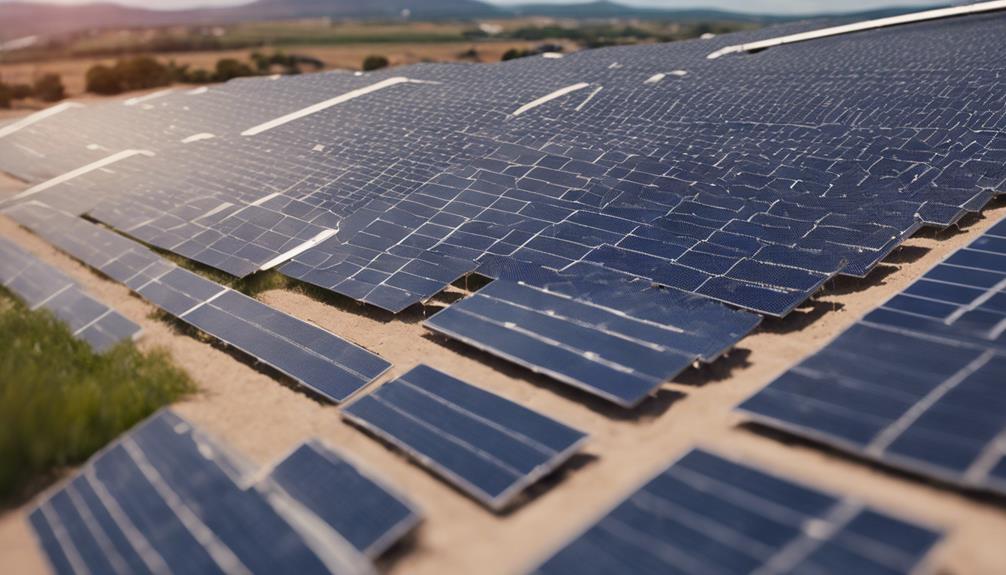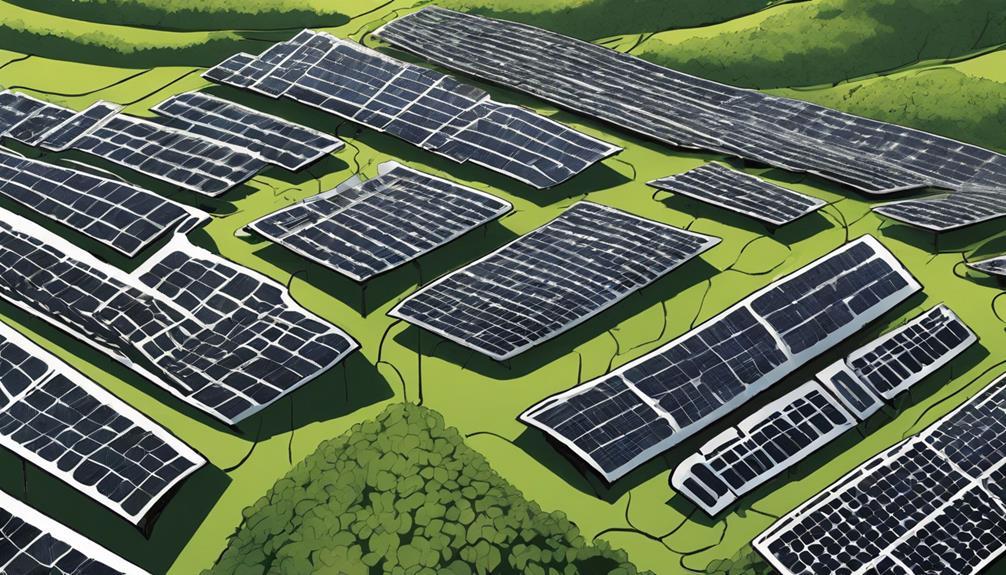When it comes to renewable energy sources, I've found that each has its pros and cons. Biofuels, for instance, have lower carbon emissions than fossil fuels, but their production can lead to deforestation and high energy consumption. Solar and wind energy, on the other hand, generate electricity efficiently with minimal carbon emissions. Geothermal energy has low carbon emissions and land use requirements, but its availability is limited to suitable geological formations. As I explore the complexities of these energy sources, I realize that understanding their strengths and weaknesses is vital for a sustainable future. There's more to uncover about the best paths forward.
Key Takeaways
- Renewable energy sources vary in efficiency, with solar and wind energy being more effective than biofuel production.
- Biofuels have lower carbon emissions than fossil fuels, but their production can lead to deforestation and high energy consumption.
- Solar energy is ideal for regions with high sunlight intensity, while wind energy is suitable for areas with strong winds.
- Geothermal energy has low carbon emissions and land use requirements, but is limited to suitable geological formations.
- Infrastructure development is crucial for the successful implementation of renewable energy systems, regardless of the source.
Efficiency Comparison

When it comes to harnessing renewable energy, efficiency is an essential factor, and a closer examination reveals that biofuel production requires significant energy consumption, whereas solar and wind energy methods are more effective in their energy usage.
Biofuel production involves energy-intensive processes, which can be a drawback. On the other hand, solar panels and wind turbines generate electricity directly from natural resources, making them more effective.
Geothermal energy also has low carbon emissions, adding to its effectiveness. Overall, solar and wind energy methods stand out as more effective options, while biofuel production lags behind.
This efficiency comparison is vital in determining the most viable renewable energy sources for our future needs.
Environmental Impact Analysis

As I delve into the environmental impact of renewable energy sources, it's crucial to note that biofuels produce lower carbon emissions compared to fossil fuels, but their production can lead to deforestation, a devastating ecological consequence.
In contrast, solar and wind energy have minimal carbon emissions during operation, making them a more environmentally friendly option.
Geothermal energy also performs well, with low carbon emissions and minimal land use requirements. However, it isn't without its concerns, including potential greenhouse gas release and subsidence.
It's imperative to consider these factors when evaluating the environmental impact of each renewable energy source. By doing so, we can make informed decisions about which sources to prioritize in our shift to a more sustainable future.
Availability and Accessibility
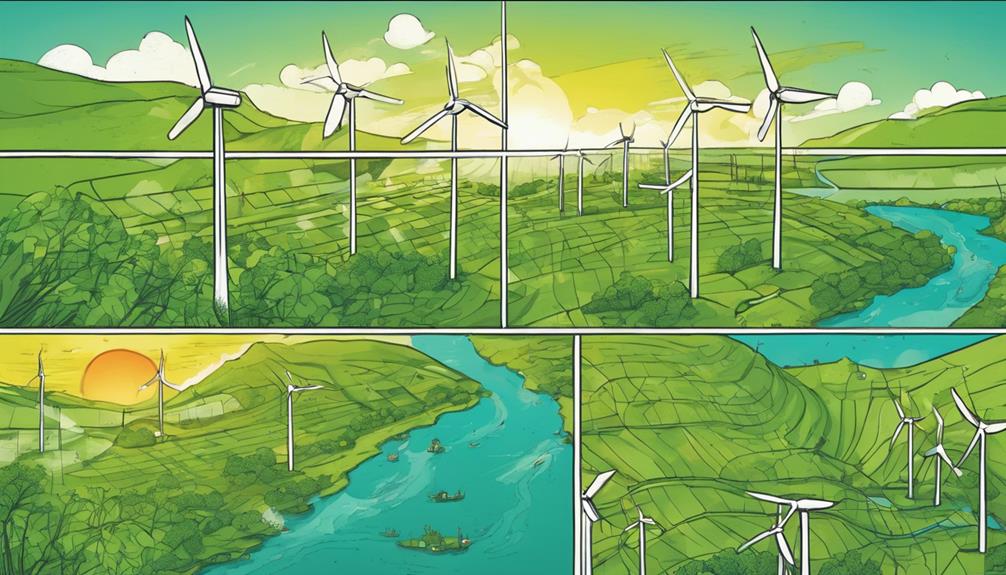
I'll now examine how the availability and accessibility of renewable energy sources vary greatly based on geographic limitations, climate patterns, and geological formations.
For instance, solar energy is more accessible in regions with high sunlight intensity, while wind energy is more viable in areas with strong winds. Geothermal energy, on the other hand, is limited to regions with suitable geological formations.
Climate patterns also play a significant role, with certain areas experiencing more frequent extreme weather events that can impact energy generation. Moreover, infrastructure development is critical for implementing renewable energy systems, and its accessibility can be limited by geographic constraints.
Understanding these factors is essential for effective planning and implementation of renewable energy sources.
Challenges and Limitations
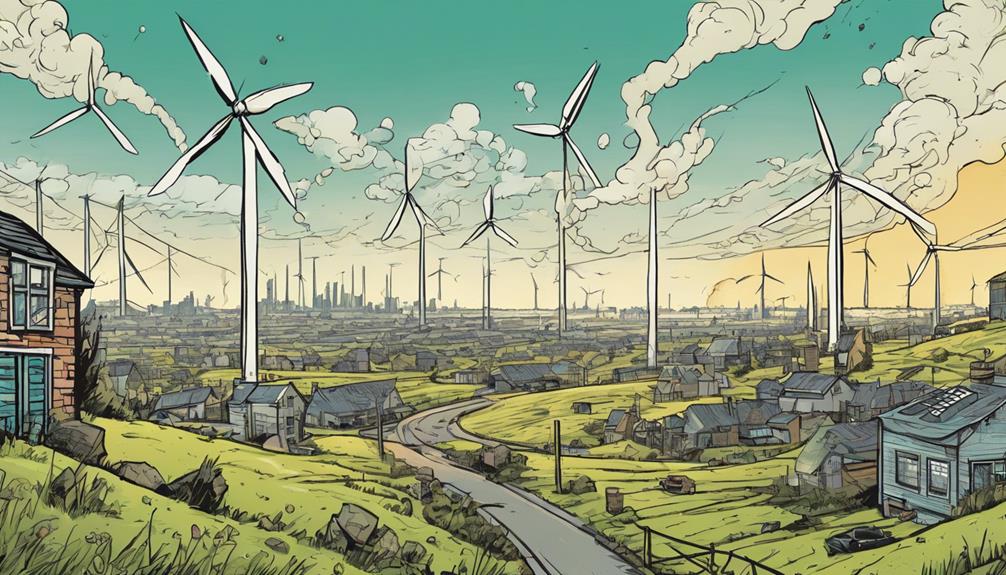
Despite the benefits of renewable energy sources, they each come with unique obstacles and limitations that must be addressed to ensure widespread adoption. As I investigate the challenges, I'm reminded that no solution is perfect.
Biofuel production, for example, requires large amounts of land for crop cultivation, raising concerns about deforestation and food security.
- Energy consumption in biofuel production can be significant, posing obstacles for widespread adoption.
- Infrastructure development is essential for implementing renewable energy systems, but it comes with its own set of challenges.
- Geographic limitations impact the implementation of renewable energy sources, making it challenging to replicate success across different regions.
- Various challenges and limitations for solar, wind, and geothermal energy sources require tailored solutions to overcome their unique hurdles.
Key Takeaways

In conclusion, the comparative analysis of renewable energy sources highlights several key points that must be considered when evaluating their suitability for widespread adoption.
To start with, biofuel production leads to deforestation and significant energy consumption, making it a less desirable option.
On the other hand, solar and wind energy methods are more efficient and have minimal carbon emissions, making them more attractive alternatives.
Geothermal energy also stands out with its low carbon emissions and minimal land use requirements. It's evident that the availability and accessibility of renewable energy sources vary greatly based on geographic and climatic factors.
Lastly, infrastructure development is essential for the successful implementation of these systems.
Frequently Asked Questions
How Does Government Policy Impact the Adoption of Renewable Energy Sources?
As I explore the world of renewable energy, I realize that government policy plays a vital role in adoption, with incentives and regulations either encouraging or hindering the shift towards sustainable sources.
What Role Do Energy Storage Systems Play in Renewable Energy Implementation?
As I explore renewable energy, I realize that energy storage systems play a vital role in ensuring a stable supply, bridging the gap between intermittent energy generation and constant demand.
Can Renewable Energy Sources Meet Rising Global Energy Demands?
As the global energy demand skyrockets, I'm left wondering if renewable energy sources can keep up with the pace. While they show promise, their efficiency and accessibility vary, making it a tough act to follow, especially for biofuels.
How Do Renewable Energy Sources Affect Local Job Markets and Economies?
'As I explore the impact of renewable energy on local job markets and economies, I find that solar and wind energy create new job opportunities, while geothermal energy boosts local economies, but biofuel production has mixed effects.'
What Are the Potential Applications of Renewable Energy in Transportation Systems?
"As I hit the road, I envision a future where renewable energy fuels my journey – biofuels powering vehicles, electric highways humming with solar energy, and geothermal energy driving public transport, revolutionizing the way we travel."
Conclusion
As I wrap up this journey through the world of renewable energy, I'm left with a sense of awe at the sheer vastness of possibilities.
The pros and cons of each source have painted a nuanced picture, and I'm convinced that a cocktail of these alternatives can be the game-changer our planet desperately needs.
With a million reasons to switch to renewables and not a single excuse to delay, the future of our planet depends on our willingness to act – and act now.

